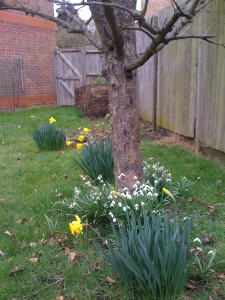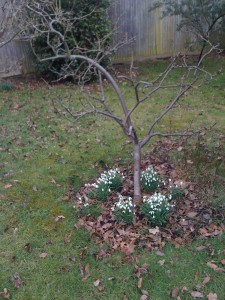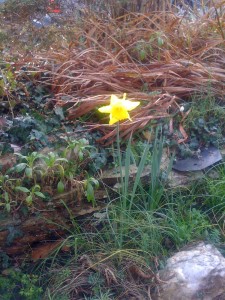For various reasons, Diana and I found ourselves wandering around Oxford a couple of weeks ago. We parked at Thornhill Park and Ride on the eastern edge of the city, finding a space even though there had been a sign saying that the car park was full and we should go round the ring road to the northern Park and Ride. We got off the bus in the High and immediately looked for coffee. We bypassed the High Street coffee shops and went to Brown’s in the covered market. I have fond memories of Brown’s, since that is where we used to go for breakfast after Orieladelphian dinners, in the days before we were allowed to stay in college for it. It did an immensely good greasy fry-up, just the thing for a hangover. It also allowed a ten o’clock breakfast, instead of an 8.30 one, just the thing for a hangover. Brown’s is still doing fry-ups, but it was too late for breakfast and too early for lunch, so a cup of filter coffee for a reasonable price was just right.
We went from the market to the Broad, looking for the Oxford Museum of the History of Science, and found it next door to the Sheldonian Theatre and opposite Blackwell’s book shop. It’s not a big museum, but does pack a lot in. There are globes and stellar globes, astrolabes, quadrants and all manner of delicate brass astronomical apparatus from unfeasibly early periods. There are clocks, early experiments on electricity and radio and some slide rules from the 17th and 18th centuries. I had used a slide rule at school and university (in the days before electronic calculators, my dear children) and had always assumed it was a relatively recent invention to avoid the use of log tables. I had always assumed wrong.
We had lunch at the restaurant in the University Church of St Mary the Virgin and then went for a walk through Christchurch Meadow, where we discovered that the price for entry into Christchurch College, through the Meadow Gate, was exorbitant. As a good Oriel man, whose idea of entry into Christchurch was a post-Bump Supper mass rampage in black tie, I was not going to pay. We walked down to the river (Isis in Oxford, Thames everywhere else) and along the river to a footbridge, which led to the college boathouses. This was the first time in several decades that I had been to this part of Oxford. When I was an undergraduate, and even for a year or two afterwards, the boathouses were the destination of a twice a year pilgrimage to watch the inter-collegiate rowing, known as Torpids and Eights. Oriel was a mighty rowing power. We went head of the river at Torpids in 1972 and held that position until I went down and beyond. The boathouses, at those times, thronged with spectators. It could take half an hour to fight your way up the stairs to the bar to buy a pint, and by the time you’d got back down to the riverside, you’d have drunk it and needed to go back for another. (That was the reason that one year I had to walk away with a pint glass; I just couldn’t get back up the stairs to return it.)
The thing was, returning after so long, I couldn’t remember which precisely the Oriel boathouse was. At first, it looked promising; there were college crests on the first half dozen boathouses, so I walked along looking for Oriel’s, but couldn’t see it. We got to the end boathouse and turned back. I was still looking, in case I’d missed it first time, but I hadn’t. Was it really one of the scruffy-looking ones without a crest?
We walked on round the Meadow, alongside the river Cherwell, with a clear view of Diana’s college, St Hilda’s. We emerged onto the High by the Botanical Gardens and stopped off at the Oxford Rendezvous for afternoon tea, tempted by the array of cakes in the window. From there, we crossed the centre of town to the Ashmolean museum and got lost looking for the modern art. And lost again, later, looking for the exit. And then we went home.



